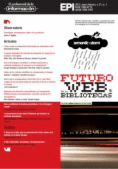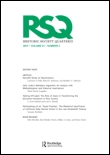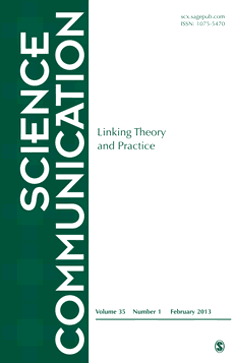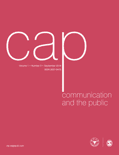
Environmental Communication-A Journal of Nature and Culture
Scope & Guideline
Bridging Environmental Issues with Communication Insights
Introduction
Aims and Scopes
- Interdisciplinary Approaches to Environmental Communication:
The journal embraces a range of methodologies, integrating insights from communication studies, environmental sciences, cultural studies, and social sciences to address complex environmental issues. - Cultural Narratives and Environmental Identity:
Exploring how cultural narratives shape environmental identities and activism, the journal emphasizes the role of storytelling and personal experiences in fostering ecological awareness. - Impact of Media on Environmental Understanding:
The journal investigates the influence of various media forms—including traditional media, social media, and emerging technologies—on public understanding of environmental issues and climate change. - Engagement and Mobilization Strategies:
Research published in the journal focuses on strategies for engaging communities and mobilizing action for environmental advocacy, emphasizing the role of effective communication in fostering collective action. - Critical Examination of Environmental Discourse:
The journal critically analyzes the framing of environmental issues in public discourse, assessing how language, narratives, and representations shape perceptions and policy responses.
Trending and Emerging
- Digital and Social Media Activism:
There is a growing focus on the role of digital and social media in environmental activism, particularly how platforms like Instagram and TikTok are utilized for climate communication and mobilization. - Narratives of Care and Community Engagement:
Research emphasizing care ethics and community-based approaches to environmental issues is gaining prominence, highlighting the importance of local narratives and collective action in fostering environmental stewardship. - Climate Justice and Equity in Communication:
An increasing number of studies are addressing climate justice, focusing on how communication practices can promote equity and representation for marginalized communities in environmental discourse. - Innovative Communication Technologies:
Emerging themes include the use of innovative technologies such as virtual reality and gamification in promoting pro-environmental behaviors, reflecting a trend toward interactive and immersive communication strategies. - Intersections of Identity and Environmentalism:
There is a rising interest in exploring how identity factors, including gender, ethnicity, and socio-economic status, influence environmental attitudes and engagement, fostering a more inclusive discourse.
Declining or Waning
- Traditional Environmental Journalism:
There appears to be a declining emphasis on conventional environmental journalism, as the focus shifts toward participatory and digital forms of communication that engage audiences in different ways. - Technical Risk Communication:
The once strong emphasis on purely technical risk communication strategies is diminishing, with a growing preference for narrative-driven and emotionally resonant approaches that connect with audiences on a personal level. - Overly Simplistic Environmental Messaging:
Research focusing on simplistic environmental messaging is less prevalent, as scholars increasingly recognize the need for nuanced and contextually rich communication that addresses the complexities of environmental issues. - Focus on Polarization in Environmental Discourse:
While polarization remains a topic of interest, the number of studies exclusively dedicated to this theme has decreased, as researchers are exploring broader frameworks that encompass collaboration and consensus-building. - Historical Perspectives on Environmental Issues:
There is a noticeable decline in studies that focus exclusively on historical perspectives of environmental communication, as recent research tends to favor contemporary issues and forward-looking approaches.
Similar Journals

Middle East Journal of Culture and Communication
Charting New Territories in Middle Eastern StudiesMiddle East Journal of Culture and Communication is a vital scholarly platform published by BRILL, dedicated to fostering an understanding of cultural dynamics and communication pathways within the Middle East. Established in 2008, this journal delivers a rich array of interdisciplinary research spanning the fields of Arts and Humanities, Communication, Cultural Studies, Political Science, and Sociology. With an impact factor reflective of its commitment to high-quality scholarship, it currently ranks in various quartiles, including Q3 in Arts and Humanities (miscellaneous) and Q4 in Communication and Political Science, demonstrating its importance in the academic discourse surrounding these disciplines. The journal's open access policy ensures that critical insights and analyses are widely disseminated, catering to a global audience of researchers, professionals, and students alike. The Middle East Journal of Culture and Communication stands as an essential resource for those seeking to explore the intricate tapestry of cultural interactions in the region through rigorous academic inquiry.

Frontiers in Communication
Innovating Dialogues in a Dynamic WorldFrontiers in Communication is a prestigious open-access journal published by FRONTIERS MEDIA SA, dedicated to advancing the field of communication studies. Established in 2016 and situated in Switzerland, this journal has quickly ascended to notable ranks, achieving a Q1 category in both Communication and Social Sciences (miscellaneous) as of 2023. With an impressive Scopus rank, positioning it in the 75th and 78th percentiles for its respective categories, Frontiers in Communication serves as a vital platform for innovative research, interdisciplinary dialogue, and the dissemination of knowledge in the rapidly evolving landscape of communication. The journal emphasizes accessibility and intellectual exchange, providing an open-access format that ensures unrestricted access for researchers, professionals, and students alike. By fostering collaboration and exploration across various communication frameworks, Frontiers in Communication plays a crucial role in shaping the future discourse within the field.

Canadian Journal of Communication
Fostering Insightful Dialogues in Communication StudiesCanadian Journal of Communication, published by University of Toronto Press Inc., serves as a vital conduit for scholarly discourse within the field of communication studies. With an ISSN of 0705-3657 and an E-ISSN of 1499-6642, this esteemed journal holds a Q2 ranking in the category of Communication according to 2023 metrics, reflecting its commitment to high-quality research and innovation. Located in Canada and covering converged years from 2016 to 2024, the journal provides a comprehensive platform for the exchange of ideas, critical analyses, and theoretical advancements that shape our understanding of communication in contemporary society. Although it does not currently offer open access, the journal’s influence is demonstrated by its position in Scopus, ranking #332 out of 511 in the Social Sciences Communication category. This publication is essential for researchers, professionals, and students seeking to deepen their knowledge in communication contexts and explore the intricate dynamics that define human interaction.

Doxa Comunicacion
Exploring the forefront of communication research.Doxa Comunicación is a prominent open-access journal dedicated to advancing the field of communication studies, published by Universidad San Pablo CEU, under the Faculty of Humanities and Communication Sciences. Established in 2003, this journal has gained recognition for its commitment to disseminating high-quality research and thought-provoking articles, fostering a vibrant academic community. With an ISSN of 1696-019X and an E-ISSN of 2386-3978, Doxa Comunicación occupies a vital niche in the academic landscape of Spain, contributing to both national and international discourses. In the 2023 rankings, it is categorized in the Q3 quartile within the fields of Communication and Social Sciences (miscellaneous), reflecting its competitive standing among peer publications. The journal's diverse scope, including contemporary communication theories and practices, ensures relevance for researchers, professionals, and students alike. With a Scopus rank of #333 in Social Sciences (miscellaneous) and #291 in Communication, Doxa Comunicación serves as an essential platform for innovative research that addresses the complex challenges of modern communication in a rapidly evolving society.

Profesional de la Informacion
Transforming the Landscape of Academic DiscourseProfesional de la Informacion is a leading academic journal dedicated to advancing research in the fields of Communication, Cultural Studies, Information Systems, and Library and Information Sciences. Published by EDICIONES PROFESIONALES INFORMACION SL-EPI, this journal has established itself as a pivotal resource for scholars and practitioners alike since its inception in 2006, holding an impressive Q1 ranking across its categories in 2023. With an impactful presence reflected in its Scopus Rankings—33rd out of 511 in Communication and 26th out of 280 in Library and Information Sciences—Profesional de la Informacion provides a forum for innovative research and discussion. Although it operates under a subscription model, the journal’s commitment to quality research contributes significantly to the knowledge base within its fields, making it an essential read for those who are passionate about information and communication studies. Positioned in the vibrant academic landscape of Barcelona, Spain, this journal encourages submissions that explore contemporary challenges and advancements in these vital areas of study, solidifying its role as a cornerstone of scholarly discourse.

IC-Revista Cientifica de Informacion y Comunicacion
Fostering Innovation in Academic DiscourseIC-Revista Cientifica de Informacion y Comunicacion, published by UNIV SEVILLA, EDITORIAL, stands at the forefront of academic discourse in the fields of Communication, Cultural Studies, Library and Information Sciences, and Linguistics and Language. With its ISSN 1696-2508 and E-ISSN 2173-1071, this esteemed journal showcases high-quality research, contributing significantly to the advancement of knowledge since its inception in 2016. The journal is recognized for its rigorous standards, holding a Q2 category in Communication, a Q1 category in Cultural Studies, as well as Q2 rankings in both Library and Information Sciences and Linguistics and Language as of 2023. With a growing reputation, it is ranked in the mid percentiles across various Scopus categories, marking it as a key player in its spheres of influence. Although not an open-access journal, it remains accessible through institutional subscriptions, making it a vital resource for scholars and practitioners alike. The editorial team is dedicated to fostering innovation and engagement within the academic community, aligning with the evolving dynamics of information and communication.

Rhetoric Society Quarterly
Exploring the Art and Science of Rhetoric.Rhetoric Society Quarterly, ISSN 0277-3945, is a distinguished academic journal published by Routledge Journals, Taylor & Francis Ltd, based in the United Kingdom. Since its inception in 1976, the journal has become a vital platform for scholarly discourse in the fields of Communication and Linguistics and Language, showcasing research that examines the complexities of rhetoric across various contexts. Currently enjoying a Q2 ranking in Communication and an impressive Q1 ranking in Linguistics and Language, it is recognized for its rigorous peer-review process and commitment to quality. With an H-index reflective of its scholarly influence and reaching across generations of research leading up to 2024, the journal continues to be a crucial resource for researchers, educators, and practitioners. Although it does not currently offer open access options, readers can expect high-quality, impactful articles that contribute significantly to their fields. Explore the rich tradition of rhetorical scholarship and engage with a community dedicated to advancing knowledge and practice within this ever-evolving domain.

SCIENCE COMMUNICATION
Exploring the Dynamics of Science and Public UnderstandingSCIENCE COMMUNICATION is a premier journal that has established itself as a vital platform for the exploration of the intersection between science, society, and communication practices. Published by SAGE Publications Inc, this journal boasts a commendable impact within the field, evidenced by its 2023 ranking as Q1 in Sociology and Political Science, placing it in the top percentile of its category. With an impressive Scopus rank of 14 out of 1466 in the social sciences domain, it serves as an essential resource for researchers, professionals, and students dedicated to understanding how scientific information is communicated and perceived across various platforms and audiences. Spanning a rich publication history from 1979 to 2024, SCIENCE COMMUNICATION publishes original research, case studies, and reviews that contribute to the development of effective communication strategies in science. Although the journal does not currently offer open access options, its content remains pivotal for fostering informed discourse within academia and beyond. Engaging with this journal is invaluable for anyone interested in enhancing science literacy and engagement in contemporary issues.

Communitas
Cultivating Critical Discourse in a Global ArenaCommunitas, published by the University of the Free State, is an esteemed open-access journal that has been a gateway for innovative research and discourse in the fields of communication, linguistics, and language since its inception in 2017. With an ISSN of 1023-0556 and E-ISSN of 2415-0525, the journal aims to foster scholarly exchange by providing a platform for critical analysis and interdisciplinary collaboration. Although it currently falls into Q4 in Communication and Q3 in Linguistics and Language, *Communitas* has made significant strides in establishing its presence in Scopus rankings—ranking 567 out of 1088 in Arts and Humanities and 397 out of 511 in Communication—and sources for researchers at varying stages of their careers. Addressed to a global readership, the journal invites contributions that enhance understanding and generate new perspectives on socio-linguistic issues and communicative practices, making it a pivotal resource for researchers, academics, and students committed to advancing knowledge in these dynamic fields.

Communication and the Public
Bridging communication theory and public engagement for impactful insights.Communication and the Public is an esteemed journal dedicated to advancing the field of communication studies, published by SAGE Publications Ltd. With its focus on the interplay between communication practices and public engagement, the journal serves as a crucial platform for researchers, professionals, and students alike. Established in 2016 and continuing through to 2024, it holds a prestigious Q1 rank in Communication, underscoring its significant contributions to scholarly discourse—evidenced by its solid placement in the Scopus Ranks at 131 out of 511 in the Social Sciences Communication category, positioning it in the top 74th percentile. While it currently operates under a traditional access model, the journal aims to foster open dialogue and disseminate impactful research that shapes public understanding of communication processes. With an ISSN of 2057-0473 and an E-ISSN of 2057-0481, Communication and the Public continues to be an essential resource for those seeking to explore the nuances of communication in public contexts.